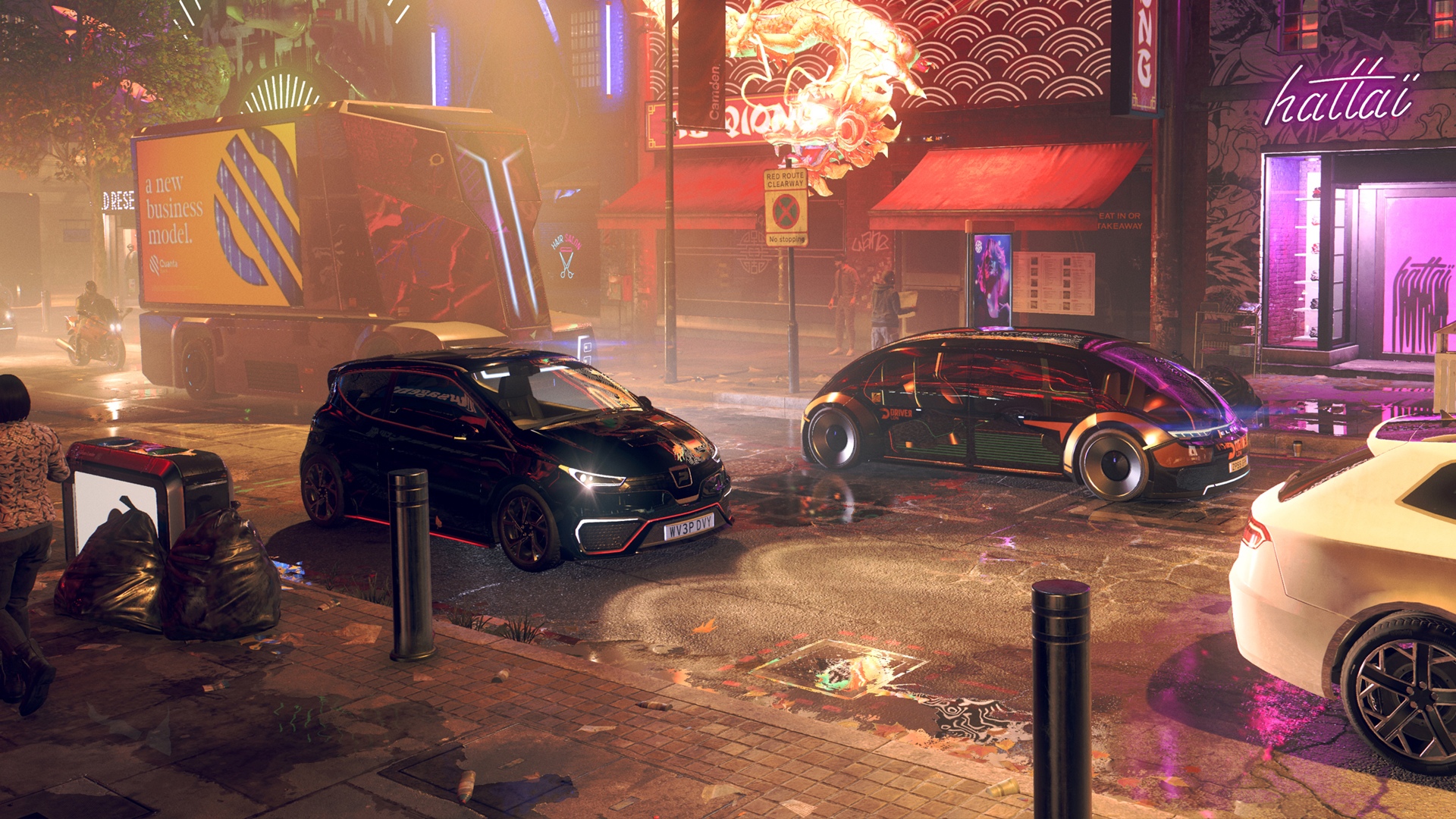From Call of Duty: Black Ops Cold War to Cyberpunk 2077, how DLSS could shape the next-generation of video game graphics
Why you should care about gaming's new favourite acronym

The next-generation of gaming has arrived, and with it, our understanding of its many buzzwords and acronyms, from ray-tracing to haptic feedback, has finally started to make sense. But, as is always the case in this industry, the focus has already turned to the next thing that could push the boundaries of video game technology, and this one is perhaps the least consumer friendly piece of jargon yet.
DLSS, or deep learning super sampling, is being sold by Nvidia as one of the big new features on a number of its most expensive and high powered GPUs, but its emergence in the PC gaming scene is just the beginning. Sony is rumoured to be patenting its own DLSS technology, while Microsoft has been actively researching how it might bring its DirectML alternative to Xbox Series X.
It won't be much longer until DLSS comes to consoles, basically, which makes it something worth understanding now before executives and developers start throwing the phrase around like a beachball in E3 conferences of the not-too-distant future.
What is DLSS?

Deep learning super sampling is, essentially, a machine learning technique, in which an AI-powered algorithm is able to create extremely high resolution images in a game without sacrificing performance. Users are subsequently able to run games in crisp, rich quality at a silky smooth framerate, no longer forced into making the choice between how good a game looks and how well it handles.
"DLSS is a new rendering technique that uses artificial intelligence to boost frame rates," Nvidia tells GamesRadar+. "With DLSS, the game renders a lower resolution frame, then runs it through dedicated AI cores on GeForce RTX GPUs to generate a high resolution frame. Gamers get the frame rates (FPS) of the lower resolution, with the image quality of the higher resolution -- the best of both worlds!"
Sure, but what *is* DLSS really?

Is ray tracing worth the hype? Definitely – here's why it made me a believer
If you really want to get into the weeds of it, a DLSS AI is trained by a supercomputer feeding it two types of image frames from a game; one aliased frame, and another "perfect'' version of the same frame that has been beautified through traditional super-sampling or accumulation rendering techniques.
Going through tens of thousands of these images, the AI learns to understand the difference between an aliased and a "perfect" frame, to the point where it can then generate images as feasibly close to the quality of the latter simply through inferencing the data of the former.
Weekly digests, tales from the communities you love, and more
In doing so, DLSS can improve the resolution of an image by up to four times without demanding as much legwork from the graphics card, presenting a game rendered in 1440p, for example, appear as if running at 4K. Inversely, the technology can also improve framerates on existing high-resolution games by alleviating the processing power typically required for presenting crystal clear picture quality, allowing the graphics card to focus more of its bandwidth on maintaining a steady FPS. If that all sounds rather complicated, that's because it is, but you can find more detailed information about the science of DLSS on Nvidia's website here if you're interested in diving even deeper.
Why should I care about DLSS?

DLSS is another one of those next-gen concepts that's difficult to get a grasp on, or even care about, until you see it in action for yourself, but it's something that could have a profound impact on the quality of gaming in the near future. While many next-gen titles are now offering players the choice between running in Graphics or Performance mode, the advent of DLSS suggests we could be reaching a point where that no longer needs to be the case; where 60 frames-per-second and ray-traced, 4K resolutions are no longer mutually exclusive.
DLSS isn't just another gimmick for high-end PC gamers, then. AMD, the graphics card manufacturer whose chips can be found in both the PS5 and Xbox Series X, is working on a super sampling feature of its own, as are Microsoft and Sony. And while Nvidia's own algorithm currently represents the best working example of DLSS, the technology itself hasn't been patented, turning this particular field of computer science into a sort of gold rush frontier where anyone with the resources can have a crack at perfecting it. Expect to see its proliferation, in other words, to the point where updated versions of the PS5 and Xbox Series X may use DLSS as a selling point for users to upgrade.
"DLSS enables gamers to crank up image quality and resolution while still maintaining fast frame rates", adds Nvidia. "This makes demanding graphics effects possible such as ray traced reflections, lighting, shadows, and ambient occlusion found in games like Cyberpunk 2077 and Watch Dogs Legion. In effect, DLSS unlocks the next generation of graphics."
On a broader note, DLSS also sits at the centre of an industry-wide push towards machine learning; a science that is set to have sweeping ramifications on gaming over the course of the next generation and beyond. As developers and hardware manufacturers continue to create smarter, faster, and more accessible forms of self-learning artificial intelligence, you can expect games to look, play, and run more realistically and intuitively than ever before.
Similarly, the DLSS tech itself is evolving all the time, with Nvidia's recently released 2.0 version promising even better visuals, faster AI rendering speeds, and greater customizability: "Nvidia’s supercomputer is continuously training the DLSS AI to enhance performance and image quality, which we can then rollout to users via our Game Ready Drivers. We are also making DLSS easier for game developers to integrate and deliver the technology in even more games. Last month, we released a DLSS plugin for the widely popular Unreal Engine 4. This gives thousands of developers a fast, easy way to integrate DLSS."
How can I see DLSS for myself?

For those with a PC gaming rig that can manage it, ordering yourself one of Nvidia's RTX GPUs is currently the only way to experience gaming DLSS first-hand, which isn't exactly cheap. The feature is also only available on a handful of supported titles, including Death Stranding, Cyberpunk 2077, Metro Exodus, and Control, but Nivida has promised more are on the way. The company has, however, provided a number of handy videos and comparison sliders to give you a half-measure idea of the end-level results, though this is of course nowhere near as authentic a taste as the real deal.
The good news is that DLSS is only going to become more accessible, affordable, and ubiquitous over time, meaning those with the patience for it can simply hold out for DLSS to come to them, whether that's in the form of a PS5 Pro, a gaming PC, or perhaps even Amazon's upcoming Luna cloud gaming service. Whatever DLSS will look like when it finally hits the mainstream, though, it's promising to be worth the wait.
For more, check out the best gaming PCs to buy right now, or watch our review of Little Nightmares 2 in the video below.
I'm GamesRadar's Features Writer, which makes me responsible for gracing the internet with as many of my words as possible, including reviews, previews, interviews, and more. Lucky internet!



